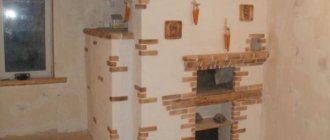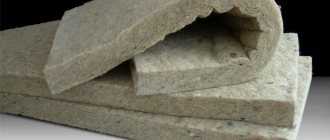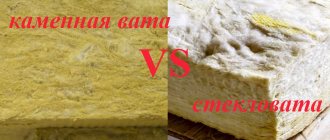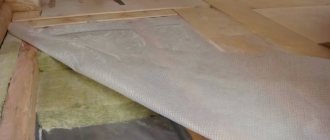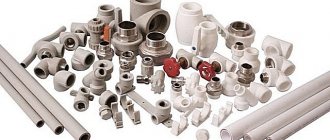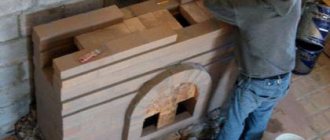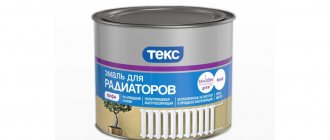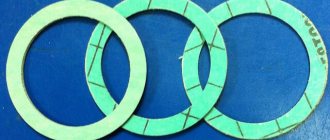When insulating the walls of a house, owners expect that the material used will last no less than the period specified by the manufacturer. Products made from polystyrene foam retain heat well, but are easily destroyed by constant exposure to sunlight or attacks from those who like to chew on something. To protect thermal insulation, different methods are used. Penoplex plaster is one of the most popular.
Expanded polystyrene and penoplex what is the difference
The invention of polystyrene marked the beginning of the creation of new building materials used for insulating building structures. One of the first to appear was polystyrene foam, in its abbreviated form called polystyrene foam. Then penoplex (or penoplex) was created.
These insulation materials are made from polystyrene, but the production technologies differ:
- foam is formed by treating polystyrene granules (with or without pressing) with steam, under the influence of which the granules swell (reaching sizes of several mm) and stick together;
- to create penoplex, a molten foam mass with gas-forming catalysts and modifying additives is pressed through a forming hole (extruded) and pressed; the material is a hardened foam with air pores usually up to 1 mm (0.1-0.2).
Penoplex is extruded polystyrene foam. Both materials differ in a number of criteria: density, thermal conductivity, strength, water absorption.
To make it clearer, the characteristics are shown in the table.
| Comparison criterion | Styrofoam | Penoplex |
| Substance – polystyrene polymer, formula (C8H8)n | ||
| Production | Steam processing, pressing | Foaming, extrusion, pressing |
| Density | Up to 25 kg – 1 m3 | m3 weighs up to 47 kg |
| Thermal conductivity (thermal conductivity coefficient) | Gaps between granules reduce thermal insulation properties - 0.037 to 0.043 | Thermal conductivity is almost a quarter lower - 0.03 W*m*C |
| Moisture permeability (water absorption) | 2% | 0.4-0.2% |
| Vapor permeability (vapor permeability value in mg/m×h×Pa) | small | Almost zero, 0.007 |
| Strength: 1 – compression, MPa, 2 – bending, MPa 3 – modulus of elasticity, MPa | Brittle, does not resist bending 1 – up to 0.16 2 – up to 0.25 | 1 – from 0.2 to 0.5, 2 – from 0.25 to 0.7, 3 – up to 18 |
| Durability (when protected from UV rays, birds, precipitation) | 10-40 years | At least 50 years |
| Operating temperature, degrees Celsius | -60 to +80 | -50 to +75 |
| Price | below | |
Both types of materials are produced in sheet form, which can be easily cut even with a knife.
Advantages
The material has a number of advantages:
- Long service life. Up to 50 years old.
- Moisture resistance. Mold or mildew does not appear under a layer of plaster, even with high humidity.
- Ecologically pure. Penoplex does not decompose over time and does not release toxic substances.
- Keeps its shape well. Does not deform due to temperature changes. This quality protects the applied layer of plaster from cracking.
- Easy to install. It is enough to securely fasten the sheets to the wall surface using plastic dowels with wide caps.
- Ease of processing. The material is easily cut with a simple stationery knife.
- Light weight. The load on the walls and foundation practically does not increase.
The material is widely used for external insulation of basements and facades of buildings.
To improve the thermal insulation properties and increase the service life of penoplex, or as it is also called, foamed polystyrene, it is necessary to cover it with a layer of plaster.
Is it possible to use penoplex for walls?
When visiting a construction market, you can find penoplex foam for foundations, walls, floors, ceilings, etc. on the shelves. Having succumbed to advertising, it is easy to go on unreasonable expenses. It is more rational to delve deeper into the issue.
The high cost of penoplex dictates rational areas of its use as insulation for building structures. If the price does not matter for the home owner, you can use penoplex indefinitely, however, without looking at the builders’ assurances that PP sheets 2-3 cm thick will block the cold well.
To insulate the facade of a house, it is more profitable to use polystyrene foam.
The effect of using thin-layer insulation is minimal and hardly noticeable, and the areas of facades covered with the wet facade method are significant. Unjustified overspending occurs. Often this is money thrown away. In many cases, it is more profitable to use polystyrene foam and then also protect it with plaster, because the same insulation should save the owner’s money.
Another reason to abandon penoplex is the operating conditions of the wall materials. Concrete walls can withstand conditions of complete vapor barrier quite undamaged. Brick and wooden walls, unable to remove the moisture that collects in the pores, begin to collapse faster. Consequently, for the sake of preserving the main load-bearing structures of the house, the use of foam plastic and mineral wool is more justified.
Penoplex is great for foundation insulation
Penoplex has its own areas of application. Thus, penoplex sheets are suitable for insulating loggias or foundations with shallow depths, as well as insulating the soil under the blind area around the house.
If you succumb to the assurances of the builders and decide to insulate the walls with penoplex, then you need to reliably protect the cladding from external influences. For this purpose, polystyrene foam plaster is used.
Which plaster should you choose to use:
When you begin work, you need to figure out what types of plaster you will use to complete the foam plaster work.
In construction practice, these types of solutions differ:
- Mineral plaster.
It is made of cement and various polymer additives. It practically does not absorb moisture, resists fungi and mold, is easy to work with new craftsmen, the price is low, which makes it an ideal finishing material. - Acrylic plaster - with a high degree of elasticity, excellent resistance to unpleasant environmental factors and ultraviolet radiation.
It is recommended that this mixture be used in areas with high humidity because cement does not withstand moisture.The price of acrylic is higher than cement.
- Silicate mixtures are effective, elastic, have good antistatic properties, vapor permeability, and resistance to precipitation.
It can be used for interior and exterior decoration.
Pay attention to the choice of gypsum, which is the best quality in acrylic compounds. The latter are resistant to silicate mixtures, even less resistant mineral ones. You should know that texture affects texture - more textured plasters that are environmentally resistant
You should know that texture affects texture - more textured plasters that are environmentally resistant.
alabaster
Popular plaster manufacturers:
The construction market offers a wide range of mixtures suitable only for penoplex.
In addition, one manufacturer may offer several items. Some of them serve to connect panels, while others perform protective functions
Your attention is drawn to the characteristics of the most famous manufacturers:
- The Ceresit mixture must be additionally colored.
The acrylic mixture is UV resistant and silicone durable. All products are of high quality and reliability. - Ecomics mixtures are designed for use indoors and outdoors. Resistant to high humidity, environmentally friendly. But the end cannot be completed during the cold period when the temperature indicator drops below 7 degrees. With their help you can eliminate cracks, marks and deformations.
- Stolit mixtures.
The products use the highest quality cement with the addition of stabilizers and modifiers, which allows the material to be used at low temperatures.
Why plaster
Opened penoplex is exposed to the following dangers:
- Birds love to peck, and rodents love to sharpen their teeth;
- exposure to UV rays (when insulating facades);
- mechanical shock or abrasion.
To protect sheet insulation from them, different methods are used:
- covering with siding, clapboard, other sheet material;
- finishing with mastics;
- coloring;
- plastering.
Penoplex easily withstands proximity to many chemicals, including any plaster.
Therefore, to answer such questions: is it possible to putty penoplex at all? And is it possible to plaster penoplex? – you can answer in the affirmative.
Thus, correctly executed façade plastering using penoplex will not only protect the insulation, but will also make the walls monolithic, smooth and decorate the building. By using decorative plastering, you can make your home unique.
Is it possible to plaster it?
Despite its moisture resistance, penoplex must be protected from precipitation. In addition, this is necessary to create an attractive appearance of the building. PVC and MDF panels are suitable for finishing this insulation indoors. Outside the house, you can create a ventilated façade made of siding or wall panels.
Penoplex can be plastered both indoors and outdoors. This will be a universal finishing option. We will look at how to do this and what is required for the work below.
Specifics of different types of finishes
Depending on the location of the insulated structure of the house, penoplex plaster has nuances. First of all, this concerns what can be used to finish penoplex.
Base finishing
Since the plinth is part of the building structure, installed directly on the foundation, it especially needs protection from moisture. Therefore, additional measures are taken to protect against water ingress, but only those that prevent the occurrence of cold bridges.
Plastering the base on polystyrene foam is usually done in a thicker layer, because:
- a) the likelihood of strong mechanical impacts on the base is higher;
- b) often for the base the finishing is done with cladding: stone-look tiles or pebble plaster (heavier).
When using heavy cladding, reinforcement is made with metal mesh, which also requires a thickened plaster coating. Only façade plaster over penoplex is used.
How to plaster penoplex indoors
If for a number of reasons it is impossible to perform penoplex insulation outside the house, it is performed indoors. Here polystyrene foam will “eat up” more area than polystyrene foam. To plaster penoplex indoors or on warm loggias, you can use gypsum plaster to protect penoplex.
The sequence of performing these works is similar to performing penoplex plaster on the outside, however, the installation of a base profile is not required. In addition, when plastering, putty is used over the reinforced layer.
There should be no drafts in the room. You should also not use heaters and fans to speed up the drying of the plaster coating. Depriving the solution of the moisture necessary to gain strength leads to a sharp decrease in moisture, as well as to the appearance of shrinkage cracks.
For plastering from the inside, not only compositions intended for interiors are suitable, but also plasters on polystyrene foam facades.
How to plaster penoplex outside
To apply plaster to penoplex from the outside, special façade plasters for penoplex or adhesive compositions (for reinforcement) are used, on top of which suitable façade or universal plaster compositions are applied.
At a height of more than 2 m from the ground surface, reinforcing mesh is practically no longer needed for reinforcement. However, it is necessary to ensure strong adhesion of the plaster coating to the PP. It is better to choose plaster that firmly “sticks” to polystyrene foam.
For example, for gluing penoplex boards to the wall, as well as for attaching reinforcing mesh, you can use the plaster-adhesive composition Ceresit CT 85. Ceresit also produces plaster compositions for decorative finishing, for example, polymer-cement “bark beetle” - ST-35, pebble - ST- 137.
Making a plaster solution
Do not use a standard cement-based mortar with sand, as it will not give a good quality plaster composition. The store is full of mixtures with a composition suitable for laying on penoplex.
Experienced finishers advise using:
- "Stolit"
- "Ceresit"
- "Ecomix".
When mixing, strictly follow the instructions left by the manufacturer on the packaging. Experienced craftsmen make a mixture that is similar in thickness to sour cream. To glue fiberglass mesh, the consistency of the mixture should be slightly thinner than required by the manufacturer. In the case of a leveling layer, the solution should be so liquid that it flows freely from the spatula. Hence the different consumption of the composition: gluing the mesh will require 4 kg per 1 sq. meter, for a leveling layer - 6 kg of mixture per square meter. meter.
Preparation of plaster mortar
The compositions of different manufacturers, despite being very similar, have different components. Therefore, it is better to use products from the same manufacturer at the same facility to avoid unnecessary problems.
Use formulations that are universal in application, and you won’t have to think about additional nuances associated with limitations in the scope of application.
Prices for popular types of plaster
Plaster
Required tools and materials
The main tools of a plasterer are a spatula and a trowel (trowel). It is better to use stainless steel spatulas for work. You will need tools of different widths. For a beginner, it is better to take a wide spatula up to 35 cm. It is advisable to round the edges of the trowel and spatula blades, this will make the work easier and faster.
You will also need:
- grater with sandpaper (you can use a plastic one);
- masking tape;
- mixer;
- rule with level;
- knife for cutting penoplex, scissors for cutting mesh;
- primer roller;
- brushes;
- containers;
- roulette;
- rags.
From materials:
- sufficient volume of plaster mixture (with a 20% margin);
- primer;
- polyurethane foam;
- tap water is not higher than room temperature;
- reinforcing mesh;
- special plastic corners with mesh (for reinforcing corners);
- base profile (to cover the top of the penoplex cladding, if it is in the middle of the wall).
Step-by-step instruction
After the penoplex is glued and secured with dowels, you can begin applying facade plaster. When a person is applying plaster for the first time, he needs to try it on some surface. For example, on the remaining sheet of penoplex. Then you can understand how comfortable it is to hold the instrument.
Kneading the mixture
It is very important to approach the first stage responsibly. You need to prepare the mixture according to the instructions, which must be on the package.
If you are doing this kind of finishing for the first time, do not prepare a large volume at once. The solution hardens quite quickly, and if you don’t have time to handle it, you’ll just have to throw it away.
To secure the reinforcing mesh, professionals recommend preparing the solution a little thinner than indicated on the package. Then you can slightly reduce the material consumption, and the mesh will be fixed much easier.
Installation of reinforcing mesh
First you need to cut the mesh into small pieces 30 cm wide. I fold them in half. These pieces will be used for laying on the corner, or you can buy ready-made corners with a mesh at a hardware store. It is from the corner of the house that they begin to install the reinforcing mesh on the penoplex.
After this, you can begin finishing. On both sides of the corner, at a distance of 15 cm, apply a plaster solution. The thickness should not exceed 3 mm. Then the bent reinforcing mesh is laid. It needs to be smoothed with a spatula and pressed a little into the solution. You need to move from the corner, starting from the top. The slopes of windows and doors are processed in the same way.
Then they work on the surface of the wall. A layer of solution is also applied that will correspond to the width of the mesh. Then the reinforcing layer is laid. Each piece should overlap the previous one, by 5–8 cm. Smooth the surface with a spatula and press the mesh. On a flat surface, move from the center of the piece.
How to align a layer
To create a final even layer you need to do a few more manipulations.
- About a day after completing the installation of the reinforcing mesh, you need to sand the surface. This is exactly how long it takes for the layer of plaster to dry well.
- A grater with sandpaper removes unevenness that could have formed when smoothing the mesh with a spatula. You need to rub in a circular motion with slight pressure.
- Then you need to apply a layer of primer. There is no need to skip this step. The primer will help the dried layer of plaster and the finishing layer adhere more firmly. In addition, if you choose antibacterial and antifungal properties, you can protect the coating from the effects of microorganisms.
- Now apply a leveling layer. The mixture is prepared according to the instructions. Apply with a large spatula, no more than 3 mm thick. Individual sections should not coincide with the joints of the reinforcing mesh.
- Then the layer is left to dry for 1–3 days. Drying time depends on the mixture itself and weather conditions. If the ambient temperature is high, it will dry out faster.
- Then you need to use the grater again. Remove small bumps and depressions.
Finishing
If you get a perfectly smooth wall surface and this texture suits the owner of the house, then you can leave this façade. To give it a more attractive look, you can use acrylic paint. A wide color palette will allow you to turn your wildest ideas into reality. But you can create a more original surface of the facade walls. Special decorative plasters are sold for this purpose. They are applied in a thin layer, and the texture is created by small inclusions.
You can also use a regular plaster mixture and special texture tools (roller, sponge, spatula or improvised materials). The texture is created from the raw surface, both with decorative compositions and with ordinary ones. After hardening, it will no longer be possible to create a drawing.
Preparing the penoplex plane
- Before plastering polystyrene foam, the surface of the penoplex cladding is inspected.
- The evenness of the entire surface is checked by the rule. The protrusions must be cut off, otherwise they will show through under the thin layer of plaster. And large differences will have to be leveled with a plaster compound, which will increase its consumption.
- All open seams (even narrow ones) must be filled with polyurethane foam, otherwise freezing spots will form in these places - cold bridges. Seams that are too wide are sealed with cut strips of penoplex of the required width and sealed with foam. Excess foam is carefully cut off flush with the surface.
- Remove dirt from the surface, sweep away dust or remove with a damp cloth.
- The heads of the dowels that attach the sheets are sunk below the surface. The solution is applied on top of them (level with the surface).
- It is advisable to make the surface of the thermal insulation rough. To do this, it is scratched with a brush, sandpaper or rolled with special needle rollers.
Installation followed by plastering (wet facade)
This method of thermal insulation of a wall outside a room is the simplest and most “low-cost” in financial terms. Insulation is carried out with expanded polystyrene, fixation in the same way as when facing with siding - fungi - umbrellas. The difference is that in this case the installation of a sub-cladding system is not required, and the insulation is additionally fixed with an adhesive mixture. This allows you to firmly fix it to the surface.
Having secured the thermal insulation over the entire required area and reinforced it with mesh, you can begin cladding the facade. This is done in three ways:
- Decorative facade plaster;
- Painting with water dispersion paint;
- Decorative plaster followed by painting the facade.
The facing layer will last longer if you treat the wall with a primer before applying it.
How to plaster penoplex correctly - technology
Next, we’ll figure out how to plaster penoplex.
First of all, the following conditions must be met:
- choose calm, not hot (below +30°C), dry weather with an air temperature above +5°C;
- the workplace is shaded from the sun and protected from precipitation.
Plastering penoplex on the outside of a building is similar to plastering polystyrene foam.
Plastering polystyrene foam using the Wet Facade technology is carried out in stages:
- preparation of the surface of the mounted PP;
- padding;
- preparing the solution;
- applying adhesive solution;
- attaching reinforcing mesh;
- mashing;
- applying a leveling layer;
- padding;
- preparation of decorative mortar (preparing the finished mixture);
- performing finishing decorative plaster;
- painting.
Preparation of the solution
Plaster compositions intended for plastering polystyrene foam surfaces are diluted according to the instructions. The dry mixture is poured into a prepared container with water (the amount of liquid is initially taken less than what is needed for the entire solution). Mixing is done using a mixer. If necessary, add water. After achieving uniform mixing, the solution is left for 5 minutes, after which it is mixed and used.
Ready-made mixtures must be stirred before use to lift settled heavy filler particles.
Installation of reinforcing mesh
The technology is simple. Installation must begin from the corners. Apply the adhesive solution to the corner with a spatula (on both sides of the corner). Apply a corner, press it to the solution and, checking the verticality with a level, press it into the mixture. If the corner has a mesh, then glue is applied under it in advance. The mesh applied to the solution is leveled and pressed down, pressing into the solution with a smoothing motion of the spatula.
The mesh is attached to flat areas of the wall after the wall corners and slopes are reinforced.
- First, draw a horizontal line for the top of the reinforcement on the wall.
- Using a wide spatula, apply a layer of adhesive solution to the area adjacent to the corner of the wall.
- “Stroke out” the solution with a notched trowel.
- Apply a grid starting from the drawn line. Align it at the corner, press it in several places to the solution with your hand.
- Smooth it with a spatula, from top to bottom and from the center to the edge so that the solution comes out through the cells. Excess is removed or added to places where the solution is insufficient. As a result, the mesh should be completely immersed in the solution.
- Apply glue to the area nearby. Apply the mesh with a 10 cm edge overlap onto the previously laid mesh fabric. Smooth out with a spatula.
- When all the sheets are plastered, the surface is dried.
They try to smooth the mesh with a spatula evenly, so that fewer uneven spots ultimately have to be sanded off.
Plastering
The reinforcing mesh should be completely placed in the plaster layer. There should be a solution under and above it. Therefore, after installing and fixing it, a 2-3 mm plaster-adhesive solution is applied with a spatula. It is better to do this with a wide tool. When all the sheets are plastered, the surface is dried.
In order not to create cold bridges, dowels are used not metal, but plastic.
Grouting and leveling
After a day (which is necessary for drying), the surface is rubbed - using a grater with sandpaper, the sharp protrusions are sanded in a circular motion. The pressure is kept constant over the entire surface.
The grain size of the skin is selected according to the subsequent finishing:
- coarse grain for decorative structural plaster;
- fine grain - for painting and wallpapering, and if decorative plaster is done in a thin layer.
After grouting, remove dust.
Application of decorative plaster
After leveling, the penoplex can be painted without plaster with decorative solutions. However, plaster decoration looks more attractive. Finishing plaster on the walls will provide additional protection.
Do I need to prime? What primer is suitable for plaster? Before plastering penoplex with decorative compounds, the surface is primed. For these works, compositions suitable for leveling and decorative mortars are selected.
The primer composition is applied using a roller and brush (where it is inconvenient to use a roller).
Before applying the decorative layer, the “layer cake” is dried.
The decorative solution is applied in a manner consistent with the desired effect. Bark beetle, travertine, rain, and fur coat patterns are often used on the façade. For indoors, the choice of effects is richer.
Plaster-adhesive mixture Ceresit Ceresit ST85 for expanded polystyrene, 25 kg
Among the significant advantages of dry building mixture, it makes sense to highlight durability, reliability and high adhesive properties.
The basic rule, which must be strictly followed before applying such an adhesive solution, is checking the load-bearing base (wall, ceiling) for the absence of dust and other contaminants. If there are any unevenness or remnants of the old putty/plaster coating on the surface, then you should definitely get rid of them.
For best adhesion, it is highly recommended to coat the underside of foam sheets with a primer. A mass of not too liquid consistency can be applied in different ways - either in the form of continuous (solid) lines, or in the form of dots, or in the form of a dotted line - at the discretion of the user.
How to paint penoplex
It’s time to resolve the questions: is it possible to paint plastered foam sheets? What composition can be applied outside the house?
For painting, varnishes and paints containing:
- benzene;
- kerosene or gasoline;
- toluene;
- acetone;
- oolif;
- coal tar;
- xylene;
- polyester resins.
All these substances, penetrating through a thin layer of reinforced plaster coating, destroy polystyrene foam. It is better to choose paints with mineral fillers, as well as water-based and silicate ones. All of them are suitable for interior and exterior decoration.
Paint selection
Some facade paints can destroy penoplex, so the choice should be made based, first of all, on the physical and chemical characteristics of the insulation and paint.
Which paints should you not choose?
Paints that contain the following substances are not suitable for penoplex: benzene, toluene, xylene, acetone, coal and polyester tars, gasoline, kerosene, drying oil.
When painting penoplex, never use solvents such as acetone, kerosene, gasoline, white spirit, all these substances practically corrode the insulation.
Paints intended for penoplex 1. Mineral paints. They contain lime and cement, which are absolutely safe for insulation, and therefore they can and should be used. Mineral paints do not contain any of the harmful substances, so the finishing of the building facade will not be affected at all. 2. Facade material containing silicate glass as its base. The composition of this material also does not pose any threat to the finishing of the building and, of course, to the insulation. 3. Water-based paint for external work. Paints in this category are also not prohibited for penoplex; the only nuance that is worth remembering when choosing water-based paint is that it should be intended specifically for facade work, only in this case it will be highly resistant to humidity and other weather influences.
Water-based paints have the following advantages:
- one of the most significant advantages is their environmental friendliness. They are completely safe for the human body, so no additional precautions are required when working with them; — the surface covered with them has increased resistance to aggressive environmental factors; — have a water-repellent effect; - are resistant to stains; - low level of water absorption, this advantage is also a very significant factor when choosing paint for penoplex; — a large assortment of colors, which makes it possible to paint the facade of the house in any color and shade; - low cost. Thanks to this advantage, water-based paints are becoming more popular; - the ratio of price and quality is also a decisive factor when choosing paint.
Important! If you decide to carry out the work of plastering, puttying and painting a facade insulated with penoplex yourself, do not forget about all the recommendations given in this article, or consult with a specialist who will certainly help you choose mixtures, paint and putty that meet all the necessary requirements.
Famous manufacturers
The main well-known brands for plastering polystyrene foam are produced by the following companies:
- the Sto AG concern (Germany) offers a line of Stolit plaster mixtures;
- Henkel concern (Germany) produces Ceresit plaster mixtures;
- Ecomix company produces mixtures of the same name for Wet facades.
Line of materials from the Russian subsidiary of the German concern Sto AG:
- Sto-Baukleber (for gluing polystyrene foam);
- StolevellDuoplus or Uni (for gluing and reinforcement);
- StoPutzgrund or StoPrep Miral (intermediate priming);
- Sto-Strukturputz or StoMarlit (finishing plaster mixtures).
Ecomix offers:
- adhesive for mounting polystyrene foam – BS-113;
- plaster and adhesive composition for making a reinforced layer on top of slabs - BS-106;
- quartz primer – BS-707;
- for finishing – decorative mixture “bark beetle” BS 208 or pebble BS
The German company Knauf offers the “Warm Wall” line, including the following compositions:
- Sevener (plaster and adhesive);
- Decorgrund (primer);
- Diamond (decorative).
Primary layer sketch
Plastering the walls using penoplex from the outside is applied using reinforcing mesh. In this case, the plaster and adhesive composition should be both under the mesh and on top. The application technology should be followed step by step:
- First, the surface is lined out and treated with a compound.
- Then the mesh is applied and strengthened.
- Smooth out with a spatula so that the solution appears through the cells. The plaster should be evenly distributed over the surface, and the mesh should be completely immersed in the composition.
- After finishing the work, the surface is dried.
After a day, the walls need to be leveled using a special grater.
Is polystyrene foam suitable for insulating wooden, brick, foam concrete houses?
Expanded polystyrene is a universal insulation material suitable for performing its tasks in any conditions. However, for the insulation cake to work properly, the correct ratio of vapor permeability of all layers is required, which should be maximum inside and gradually decrease towards the outside.
This introduces some difficulties in the use of polystyrene foam, which has extremely low vapor permeability (EPS is considered completely impermeable to vapor).
According to the degree of suitability of PPS for insulation, materials can be arranged in the following sequence:
- Foam concrete. The most permeable material for steam.
- Wooden wall. Wood itself does not conduct steam, but joints, cracks and joints are replete with loopholes for steam.
- Brick wall. The closest (relatively) material in terms of vapor conductivity.
NOTE!
Some experts do not recommend PPS for outdoor use at all, considering it a “time bomb” that quietly accumulates moisture in the thickness of the walls.
However, polystyrene foam is often used to insulate walls outside, obtaining quite satisfactory results. The solution to the problem is to organize effective ventilation at home, removing steam from the air and relieving the problem.
The best adhesive models
In this paragraph, we will consider the main factors that will influence the choice of polyurethane foam for insulation - this is the price, respectively, the quality of the adhesive foam and the method of its application.
ANSERGLOB BCX 39
ANSERGLOB BCX 39 is one of the most universal options - a cement-polymer adhesive for penoplex based on a mixture of special cement and glue. Used for installation on concrete, brick, cinder block surfaces. Suitable for both internal and external work. The composition is as follows: Portland cement, plasticizer and some functional additives. When you apply this solution, be sure to deep prime the surface.
Aqualit SK-106P
Aqualit SK-106P has the same characteristics as the previous mixture, but is more reliable and is suitable only for external use.
Dry building mixture "Master Super". This mixture can be used to insulate load-bearing structures, both outside and inside the building. Before use, be sure to dilute with a small amount of water and apply a small layer onto the extruded polystyrene foam with a spatula.
TechnoNIKOL adhesive foams, Ceresit CT 84, TytanStyro 753. These foams are almost identical in their composition and properties. Approximately a small cylinder replaces 25 kilograms of dry cement mixture, which is enough to finish 8-10 square meters of almost any surface. The application method is the same as for mounting foam - using a mounting gun, with the balloon facing up, you need to apply a small amount of foam. The foam sets in about 10-15 minutes, after which there is no need for secondary expansion.
Separately, you should consider Styro 753 foam. This foam is poisonous, so you should protect exposed skin and it is advisable to work in a respirator, avoid getting the foam in your eyes. This foam is applied in the following way - approximately 2-4 centimeters are retreated from the edge of the polystyrene foam slab and then it should be applied diagonally to the slab. The plate should be pressed and not released for about 10 minutes until the foam sets. However, if the gap between the slab and the surface that needs to be insulated is more than 2 millimeters, then it is better to use the foams given above.
Features of working with extruded polystyrene foam
Plastering extruded polystyrene foam has a number of differences due to its physical characteristics.
The most characteristic properties that show the nuances of working with this material are:
- moisture is not absorbed into the insulation boards, so all the water from the facade remains inside the finishing layer;
- the coefficient of expansion (temperature) of polystyrene foam does not correspond to this indicator for plaster mixtures, therefore, due to temperature changes, the coating applied to the slabs may crack and fall off;
- The surface of the insulation is smooth, dense, irregularities and micropores are virtually absent, which makes it difficult for the solution to adhere to it.
If the material is too smooth, it is roughened
Before starting work, you need to apply a small amount of plaster mortar to the slab and wait a day. If the coating was difficult to apply, cracked or fell off after drying, then additional treatment of the contact layer should be carried out.
It consists of increasing the roughness of the interacting part of the slab using a needle roller or small plastic brushes. Afterwards, a special primer and reinforcing mesh should be applied. The latter is fastened either with a special adhesive composition or with the residue left over from working with insulation.
Due to the low adhesion ability and weak adhesion, the thickness of the applied layers of the solution should not exceed 3 mm.
Briefly about the main thing
The plaster layer on penoplex is a universal coating. This can be a decorative finish and a rough base for most finishing materials.
Plaster is selected based on operating conditions. Acrylic resin, silicone, liquid glass and cement exhibit good adhesion to polystyrene foam
With the latter, it is important to check suitability for working with synthetic insulation
During installation work, it is necessary to follow the rules of penoplex plastering technology.
Source
Video description
In this video, watch the results of the experiment: how best to prepare the foam base for the solution:
Optimal operating conditions look like this:
- absence of strong gusts of wind;
- positive temperature from 5 to 25 degrees Celsius;
- relative humidity within 65-70%.
Penoplex plaster is spread over the base, usually with a façade spatula. For large areas, craftsmen use trowels and trowels with a metal blade.
During the setting stage, the rough leveling layer is rubbed with a trowel or after drying with coarse sandpaper (with a coarse abrasive fraction). Before finishing, the coating is impregnated with primer twice at intervals of 3-4 hours.
Features of finishing in different areas
The plinth plaster on penoplex is applied in a thicker layer than in other areas. Here it is better to choose a mineral composition with high strength characteristics. Drafts and the use of heat guns are not allowed indoors. This is resorted to to speed up the drying process of coatings, which violates the technology and reduces quality indicators. The reinforcing mesh must be fixed over the entire area of the insulated wall.
Recommendations from experts
In order for the end result to please the owner for a long time, everything must be done by adhering to the following recommendations. This applies not only to plastering a facade insulated with penoplex.
- The packaging of the plaster indicates in what temperature range it can be worked. You should not ignore it, otherwise the layer will not be as strong as the manufacturer predicts.
- Be sure to use reinforcing mesh. If it is not there, the plaster will simply fall off after a short period of time.
- You need to buy a plaster mixture from one manufacturer for the entire facade and preferably with a small margin.
- Manufacturers also indicate the time for complete drying. The recommended time frame should be adhered to.
- And don't forget about the primer.
